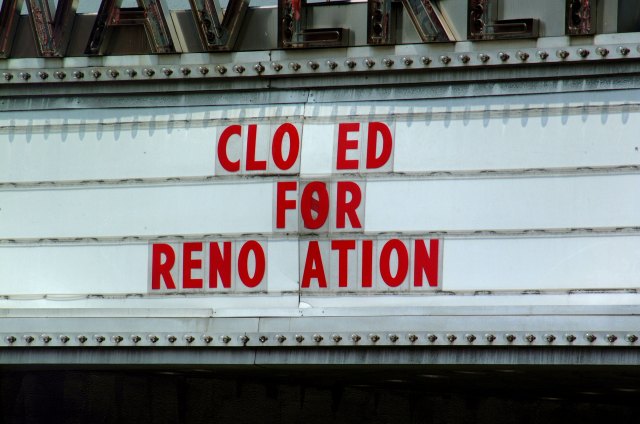
Photo by Ben Hershey on Unsplash
I am trying to write about formality in learning. This is an ongoing theme for me inevitability, given my interest in spaces for learning in which the learner is the prime mover and agent at the centre of their learning.
One of the themes for this is serendipity and happenstance. Another is about degrees of intention (in the mind of the teacher or learner).
Incidental learning connects some of this. Marsick and Watkins (2001) define incidental learning as learning that occurs anywhere under the control of the learner, with learning being unintended, unexpected and sometimes as an unconscious by-product of activity. Incidental learning may be learning that is taken for granted, tacit, or unnoticed. Such learning may be said to happen through osmosis and may be immersive, and in this sense, it can relate to ideas such as built pedagogy (Monahan, 2002) and authentic learning. It may also be implied in ideas about playful learning. For example, Sharples et al. (2015), in their summary of thinking on incidental learning, say it can happen through unstructured play, in which the learner learns through “problem solving, language use, social, physical, and self-regulatory skills.” They also notice that, as with play, persistence and confidence are factors affecting successful learning.
Being proximal to others, especially More Knowledgeable Others (Vygotsky, 1978), is likely to aid incidental learning, therefore. In this way, social media learning spaces characterised by trustful peer networks, are spaces that epitomise incidental learning.
What is the teacher’s role in promoting incidental learning then?
This may come down to establishing an interactive ethos and populating the learning environment with trigger objects including leading questions and comments, posters and pictures, and subliminal objects such as music, diverse books on bookshelves, photos in tweets, etc.
Or the ‘teacher’ may not have a role.
Such ideas may become more important as we consider new modes of learning and more diverse learning communities.
Accidental learning
In discussing the forthcoming Social Media for Learning in Higher Education Conference (aka ‘event’, ‘happening’, ‘gathering’, ‘do’…) [#SocMedHE18] Sarah Honeychurch (@NomadWarMachine) used the expression ‘accidental learning’. I liked it immediately – I think it is different to incidental learning perhaps. It reminds me of the idea of ‘happy accident‘ used by artists who play with the unexpected and who find value in mistakes. The difference in meaning is nuanced, but it is about knowing to look at and look for the meaning in unintended or unplanned situations as a strategy. With this meaning, educators (as art teachers have always done) can advise their students to take risks and positively value ‘mistakes’ as triggers or catalysts leading to the discovery of ideas and deeper knowledge. It is a strategy, therefore, for developing creativity as an outcome of learning.
Given that the phrase came up in a conversation about the distinctiveness of social media learning environments, does it tell us anything about such spaces? That’s a good question to explore I think. If we are thinking that this is different to incidental learning, it may point us towards the value of the ‘accidents’ that will happen in social media communication. Here are some initial thoughts on that:
- typos
- saying something rash that demands clarification or that triggers new lines of thought
- thinking (too) quickly
- generating responses and list making (quickly) – [like this]
- taking risks because it is so easy to do – and allowing risks to ‘fail’ well or badly, but being resilient and philosophical
- the value of learning from mistakes
So, please feel free to add your own thoughts on whether we need this idea of accidental learning! Does it say something about the distinctiveness of social media learning environments?
Update: This article on accidental learning is useful: Matheson, D. (2003). A conceptual analysis of accidental learning as an educational activity. Education On-Line. Online at: http://www.leeds.ac.uk/educol/documents/00003468.htm
References
Marsick, V.J. & Watkins, K.E. (2001). Informal and incidental learning. New Directions for Adult and Continuing Education. 89, 25-34.
Monahan, T. (2002). Flexible space and built pedagogy: emerging IT embodiments. Inventio, 4(1), 1-19. Online at: http://www.torinmonahan.com/papers/Inventio.html
Sharples, M., Adams, A., Alozie, N., Ferguson, R., FitzGerald, E., Gaved, M., McAndrew, P., Means, B., Remold, J., Rienties, B., Roschelle, J., Vogt, K., Whitelock, D. & Yarnall, L. (2015). Innovating pedagogy 2015: Open University. Innovation Report 4. Milton Keynes: The Open University. Online at: https://iet.open.ac.uk/file/innovating_pedagogy_2015.pdf
Vygotsky, L. S. (1978). Mind in society: the development of higher psychological processes. Cambridge, MA: Harvard University Press.
